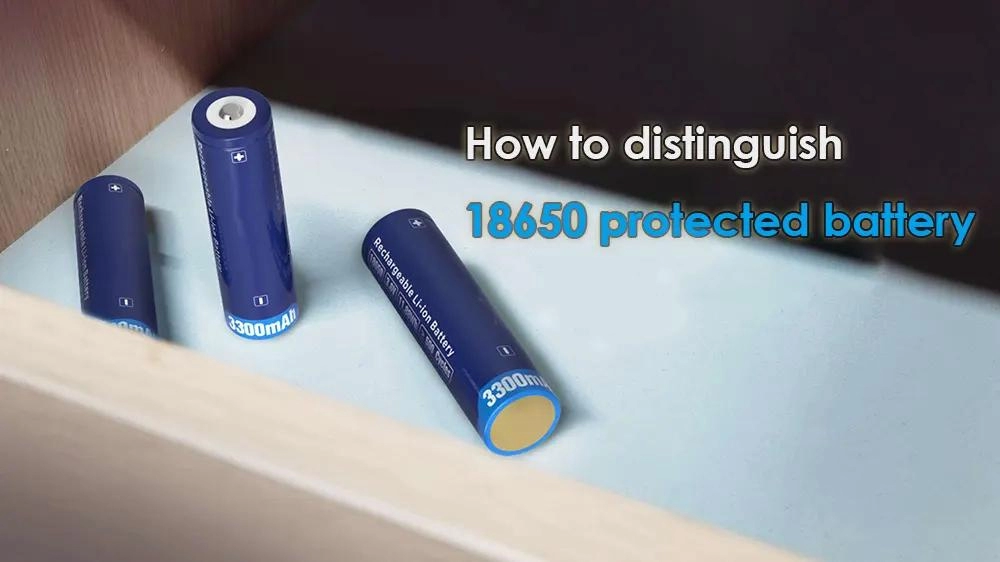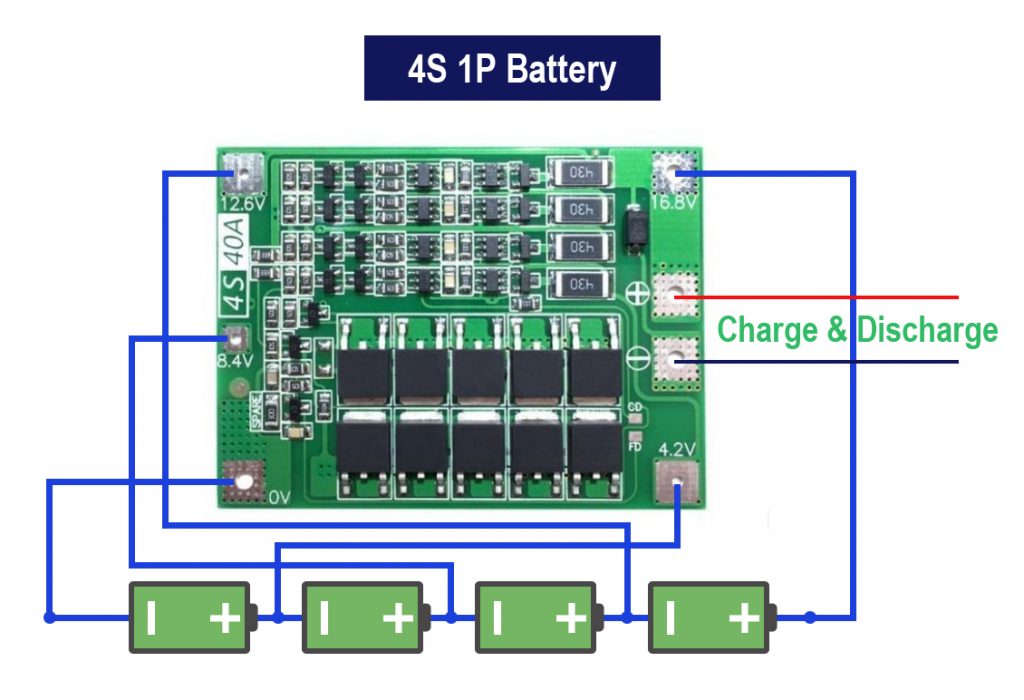When it comes to choosing the right power source for your devices, understanding the difference between protected and unprotected 18650 batteries is crucial. Whether you prioritize safety or performance, knowing these distinctions will help you make an informed decision. In this article, we will break down the key factors to consider for each type of 18650 battery, ensuring you select the one that best suits your needs.

Part 1: What is a Li-ion Protection Circuit?
A lithium-ion (Li-ion) protection circuit, also known as a battery protection circuit, is an essential component in many rechargeable Li-ion batteries, including 18650 cells.
The protection circuit is designed to prevent dangerous conditions that could lead to battery damage or pose safety hazards.
It is a small electronic system embedded inside the battery pack or attached externally.
The primary functions of a Li-ion protection circuit include:
- Overcharge Protection
- Over-discharge Protection
- Short Circuit Protection
- Temperature Monitoring Protection
Part 2: What is a 18650 Protection Circuit?

With a general understanding of Li-ion protection circuits, grasping the specifics of 18650 protection circuits becomes easier.
An 18650 battery is a type of Li-ion battery that often includes its own protection circuit, tailored to meet the specific requirements of these cells.
The 18650 protection circuit functions as a safety system for the battery, continuously monitoring factors such as voltage and temperature.
If any parameter goes beyond safe limits, such as excessive voltage or high temperature, the protection circuit immediately kicks in to prevent potential damage or catastrophic failure.
Part 3: Protected vs. Unprotected 18650 Batteries
Let’s delve into the differences between protected and unprotected 18650 batteries:
Protected 18650 Batteries:
- Built-in Safety Features: Protected 18650 batteries integrate a protection circuit that continuously monitors voltage, temperature, and current to prevent overcharging, over-discharging, and short circuits.
- Enhanced Safety: Thanks to the built-in protection, protected 18650 batteries offer an extra layer of safety, reducing the risk of damage to the battery itself and the devices they power.
- Suitable for Novice Users: Protected batteries are a good choice for users who prioritize safety. The integrated protection minimizes the chances of battery-related incidents during use.
- Larger Size: Protected 18650 batteries are typically slightly larger than their unprotected counterparts due to the inclusion of the protection circuit.
- Limited Output: The protection circuit may limit the battery’s maximum output current, potentially affecting the performance of high-drain devices.
Unprotected 18650 Batteries:
- No Built-in Protection: Unprotected 18650 batteries lack a protection circuit, making them more susceptible to overcharging, over-discharging, and short circuits.
- Compact Size: Without the added protection circuitry, unprotected 18650 batteries are generally smaller and lighter than protected ones.
- Higher Output Potential: Unprotected batteries typically offer a higher maximum output current, making them a better choice for high-drain devices that require more power.
- Requires Careful Handling: Using unprotected batteries requires more caution, as improper handling can lead to damage or failure.
- Preferred by Advanced Users: Experienced users, particularly those familiar with battery safety, often prefer unprotected 18650 batteries due to their higher performance and smaller size.
- Lower Cost: Unprotected 18650 batteries are generally less expensive than protected ones, making them a more economical option for some applications.
Part 4: Should I Buy 18650 Batteries with a PCB?
After comparing the characteristics of protected and unprotected 18650 batteries, the decision of whether to buy a battery with a PCB (protection circuit board) depends on your specific needs.
However, if you require a more compact solution with higher output for high-drain devices and are confident in your ability to handle the associated risks, then unprotected 18650 batteries may be more suitable.
For more information on how to safely handle different types of batteries, check out our First Time Charging of Lithium-Ion Batteries Guide.
18650 Batteries with PCBs: Are They Better and Safer?
When deciding whether to buy an 18650 battery with a protection circuit board (PCB), it depends on your specific needs and circumstances. Here are some factors to consider to help you make a decision.
Considerations When Choosing a Protected 18650 Battery:
1. Safety
If safety is your primary concern, especially if you are a beginner, or plan to use the battery in a device where overcharging or over-discharging could be a risk, then choosing a protected 18650 battery is a wise choice.
2. Device Compatibility
Some devices may require or recommend using batteries with a protection circuit. Be sure to consult your device’s user manual or specifications to ensure compatibility with batteries with PCBs.
3. Peace of Mind
Even if your device doesn’t require a protected battery, using an 18650 battery with a PCB can offer extra peace of mind, as the protection circuit helps prevent potential problems.
4. Cost
18650 batteries with a PCB are typically slightly more expensive than unprotected batteries. Weigh the added safety benefits against the slightly higher price for your application.
5. Performance
In some cases, 18650 batteries with a PCB may have slightly reduced performance, as the protection circuit can limit the maximum current output. If high performance is a top priority for your application, you may prefer an unprotected battery.
Top 18650 Batteries with Protection Circuits
- Panasonic NCR18650B: Known for its excellent balance of capacity and reliability, with a capacity of around 3400mAh.
- Samsung INR18650-35E: Offers a reliable combination of capacity and performance, with a capacity of around 3500mAh.
- Ufine Battery: Ideal for small to medium-sized businesses, Ufine offers customizable 18650 batteries in various capacities, voltages, and sizes, offering greater customization than mass-produced batteries from larger companies.
- LG INR18650MJ1: This battery has a capacity of around 3500mAh and is known for its high energy density and long-lasting performance.
- Sony US18650VTC6: This battery provides a capacity of around 3000mAh and has excellent performance, often used in various devices.
Frequently Asked Questions
Can I use a protected 18650 battery in any device?
Protected 18650 batteries are compatible with most devices that accept such batteries.
Does a protected battery have lower performance?
While protected batteries may have slightly reduced performance due to the additional circuitry, the difference is often minimal.
Is it dangerous to use an unprotected 18650 battery?
Unprotected batteries can be dangerous if mishandled because they are more susceptible to overcharging, over-discharging, and short circuits due to the lack of protection.
Are unprotected 18650 batteries suitable for high-power devices?
Yes, unprotected batteries are often preferred for high-power devices because they typically offer higher performance.
Do all devices need unprotected batteries?
No, many devices can safely use protected batteries. However, some high-performance applications may benefit from the higher output of unprotected batteries.
Can I add a protection circuit to an unprotected battery?
It is not recommended to add a protection circuit to an unprotected battery. Attempting to do so can be complex and potentially dangerous. The safer approach is to use the battery as intended—either protected or unprotected.
Are protected batteries larger than unprotected batteries?
Protected 18650 batteries may be slightly larger due to the added protection circuit.
Do protected batteries have higher capacity than unprotected batteries?
The capacity of both types of batteries can vary, so there is no clear correlation between capacity and protection.
Are protected batteries more expensive than unprotected batteries?
Yes, typically, protected batteries cost a bit more due to the added protection circuit and manufacturing process.
Can I replace the PCB on a protected 18650 battery?
It is not recommended to replace the PCB on a protected battery. The protection circuit is carefully designed to work with the battery, and modifying it can lead to safety concerns.
Replacing Protected Batteries with Unprotected Ones in Your Device
When considering replacing a protected battery with an unprotected battery in your device, always follow the manufacturer’s guidelines. To ensure safety, always confirm that the battery is compatible with the device and meets relevant safety specifications.







